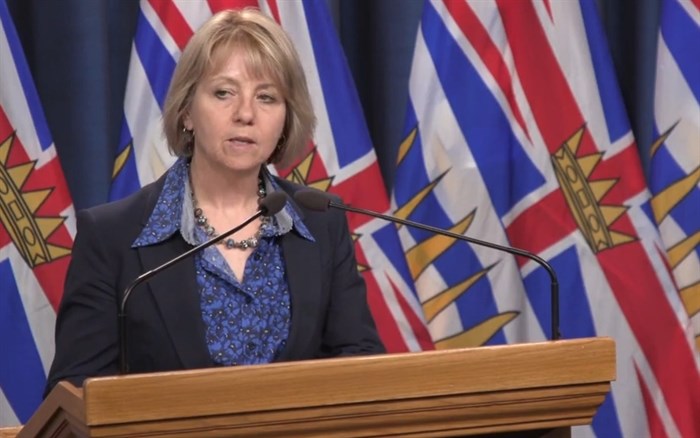
Provincial Health Officer Dr. Bonnie Henry.
Image Credit: FACEBOOK/BC Government
September 03, 2020 - 5:02 PM
Over the past few weeks, as the number of new COVID-19 cases per day have hovered around the 100 mark, much of the attention has been focused on young people partying and spreading the disease.
That started with the “Kelowna exposure events” in July where a number of parties that started in late June saw more than 170 people infected. That continued later in the summer in the Lower Mainland with other parties and careless behaviour in strip clubs, bars and other events.
But provincial health officer Dr. Bonnie Henry pointed to charts during her update today, Sept. 3, that showed many more cases are in workplaces, such as long-term care homes, food processing plants and industrial camps. Some of those outbreaks were still being identified.
“We’ve also seen transmission between workers in settings like restaurants to fast food restaurants and office settings,” Dr. Henry said. “In those places the transmission has generally been between workers who either congregate together in their workplace without taking the precautions they normally would take or sometimes it’s because they have the same social connections outside the workplace.
“For the most part, what we have seen is not a lot of transmission in workplaces from workers to the public.”
She was later asked by a reporter why there was so much emphasis on stopping the spread in bars and parties but not in workplaces.
“There’s been a lot of high profile discussion about private parties, particularly related to the Kelowna cluster and about bars and nightclubs here in the Lower Mainland,” Dr. Henry said. “Some of the private events that were happening were much more high profile and there were public notifications because we weren’t able to find everybody in a rapid way.”
In contrast, public health has often been able to contact trace everyone at risk in the smaller workplace outbreaks so those have not drawn the same kind of public attention.
“I wanted to put it out there that there are many different settings where we’re having transmissions and we are working with people in those settings to make sure the safety plans get in place,” she said, adding that’s why WorkSafeBC and public health inspectors have been going into workplaces to try to minimize the spread.
To contact a reporter for this story, email Rob Munro or call 250-808-0143 or email the editor. You can also submit photos, videos or news tips to the newsroom and be entered to win a monthly prize draw.
We welcome your comments and opinions on our stories but play nice. We won't censor or delete comments unless they contain off-topic statements or links, unnecessary vulgarity, false facts, spam or obviously fake profiles. If you have any concerns about what you see in comments, email the editor in the link above.
News from © iNFOnews, 2020